Chandni Chowk and Chawri Bazaar
Delhi is full of upscale marketplaces such as Connaught Place, Khan Market or Dilli Haat, which have become hotspots for residents and tourists alike. However, Chandni Chowk and Chawri Bazaar, located in the heart of the city, i.e., Purani Dilli, still rule the roost to this day.
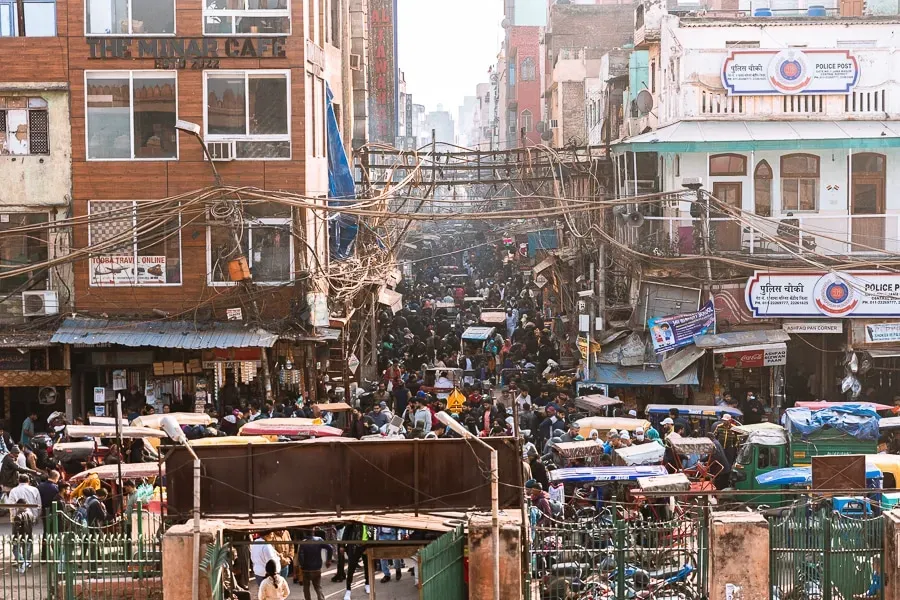
Delhi is full of upscale marketplaces such as Connaught Place, Khan Market or Dilli Haat, which have become hotspots for residents and tourists alike. However, Chandni Chowk and Chawri Bazaar, located in the heart of the city, i.e., Purani Dilli, still rule the roost to this day. As some of the biggest wholesale markets in all of Asia, they have not only been hubs of commerce but their walls have seen a lot of history.
History of Chawri Bazaar
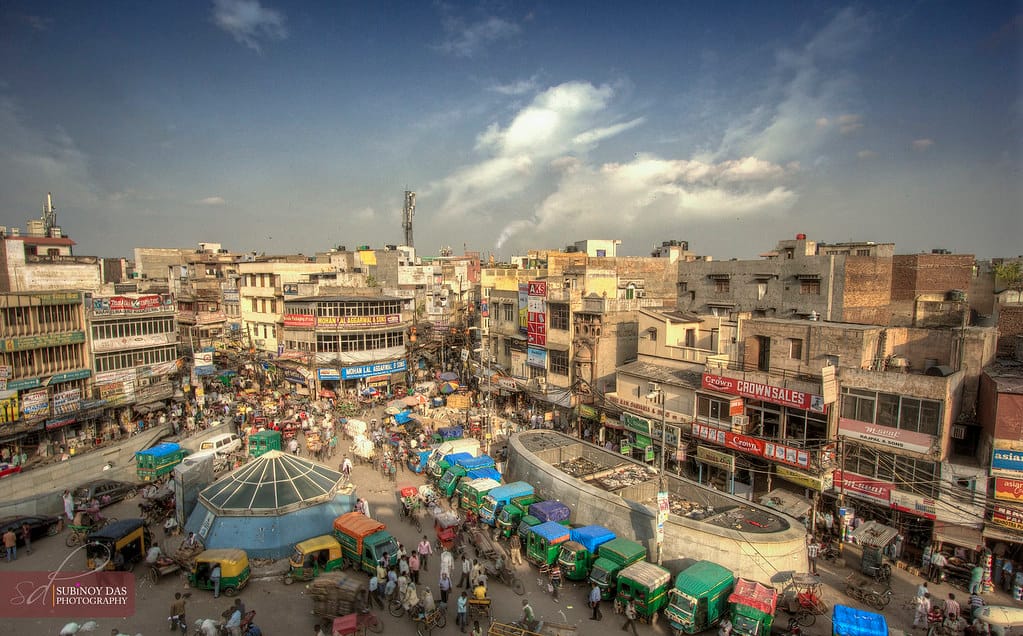
The history of Chawri Bazaar is intertwined with the history of Delhi itself, going back several centuries. The area where Chawri Bazaar stands today was once a part of the historic walled city of Shahjahanabad, built by the Mughal Emperor Shah Jahan in the 17th century.
Originally, it served as a meeting point for merchants and traders from different parts of the Mughal Empire. Established in 1840 according to numerous sources, its name is believed to have originated from the Marathi word "chawri," meaning "meeting place," reflecting its role as a bustling commercial center.
Chawri Bazaar was renowned for its thriving brass and copper trade during the Mughal era. Skilled artisans and craftsmen would create intricate utensils, ornaments, and decorative items from these metals, which were highly prized by the nobility and affluent classes.
Over time, Chawri Bazaar evolved into a prominent market for various goods, including spices, textiles, paper, stationery, and hardware. The market's strategic location near the Red Fort and Jama Masjid further fueled its growth, as it became a vital trading hub in the heart of Delhi.
During the British colonial period, Chawri Bazaar continued to flourish as a commercial center. From trade of metals, the area diversified and became a hub of paper trade because of the printing presses and paper mills in the area by colonial administrators, further expanding its economic significance.
During the British colonial era, the market became a hub for printing and paper production in Delhi. British entrepreneurs introduced modern technologies and techniques to the local economy. This led to the expansion of Chawri Bazaar's commercial activities, particularly in the field of printing and paper products.
Chawri Bazaar became renowned for its wholesale trade in various paper products, including notebooks, envelopes, stationery, and packaging materials. The market attracted merchants and traders from across the region, who sought to procure paper goods for retail or distribution in their respective areas. The availability of a wide range of paper products, coupled with competitive prices, made Chawri Bazaar a preferred destination for businesses and consumers alike.
Despite facing challenges such as fires, riots, and urban redevelopment projects over the years, Chawri Bazaar has managed to retain its historical charm and commercial vitality. Today, it remains one of the oldest and busiest markets in Old Delhi, attracting visitors from across the globe with its rich history, diverse merchandise, and vibrant atmosphere.
Chandni Chowk
Chandni Chowk's history spans several centuries of political, social, and economic change. Established by the Mughal Emperor Shah Jahan in the 17th century, Chandni Chowk was to become the centerpiece of his new capital city of Shahjahanabad, which he built on the banks of the river Yamuna and next to the Red Fort. The market's name literally translates to "Moonlight Square"- it was derived from its original design which featured a central water pool that reflected the moonlight at night, creating an ethereal ambiance.
During the Mughal era, Chandni Chowk flourished as a bustling commercial center, attracting merchants, artisans, and traders from across the Mughal Empire and beyond. Designed by Shah Jahan's daughter Jahanara Begum, the Chowk had led to three different markets- Urdu Bazaar, Johri Bazaar and Fatehpuri Bazaar.
Urdu Bazaar is a section of Chandni Chowk known for its focus on Urdu literature, books, and manuscripts. The bazaar offers a wide range of Urdu literature, including poetry collections, novels, academic texts, and historical documents such as rare manuscripts. There are speciality shops that cater specifically to Urdu language enthusiasts, which is why it is seen to not only serve as a marketplace but also contribute to the preservation and promotion of Urdu language and literature, making it a cultural hub within Chandni Chowk. However, it was damaged and destroyed quite a bit during the Revolt of 1857.
Johri Bazaar is a bustling market area within Chandni Chowk, renowned for its exquisite jewelry and gemstones. It has a long-standing reputation for craftsmanship and quality in jewelry making. The bazaar offers a wide variety of traditional Rajasthani jewelry designs, including Kundan, Meenakari and Polki amongst others. Visitors can explore numerous shops and stalls showcasing intricate pieces made out of precious metals and gemstones.
Fatehpuri Bazaar, located near the iconic Fatehpuri Mosque in Chandni Chowk, is famous for its street food, snacks, and traditional delicacies. The bazaar is lined with vendors selling a variety of mouthwatering dishes such as chaat, kebabs, samosas, jalebis, and more. In addition to street food, Fatehpuri Bazaar also offers a range of spices, dry fruits, textiles, and household items, making it a one-stop destination for both food and shopping enthusiasts.
Chandni Chowk was strategically located near the Red Fort, the imperial residence, and served as a vital centre for trade and commerce for the empire. It became renowned for its luxurious wares, exquisite textiles, precious jewels, and fragrant spices, drawing affluent patrons and nobles.
Over the centuries, Chandni Chowk witnessed numerous transformations and upheavals, reflecting the ebb and flow of Delhi's history. The market's fortunes ebbed during the tumultuous period of invasions and conflicts that followed the decline of the Mughal Empire. However, it experienced a resurgence under British colonial rule in the 19th century when Delhi became a key administrative center of British India.
The British introduced modern infrastructure and urban planning to Chandni Chowk, laying down wide roads, erecting colonial-era buildings, and establishing institutions of governance and commerce. The market evolved to accommodate new industries and technologies, becoming a hub for printing, publishing, and manufacturing. The establishment of the Delhi Railway Station nearby further facilitated trade and communication, propelling Chandni Chowk into the modern era.
Exploring Chandni Chowk is not just a journey through time but also an immersion in the sights, sounds, and flavors of India's cultural tapestry. From its ancient monuments and historic landmarks to its bustling markets and culinary delights, Chandni Chowk continues to captivate visitors with its timeless allure and dynamic spirit.
Other Attractions Nearby
Lal Jain Mandir
Constructed in the 17th century, the Lal Jain Mandir is one of the oldest temples in Delhi and the oldest Jain temple. The temple is dedicated to Lord Mahavira, the 24th Tirthankara of Jainism, and is revered by followers of the faith for its sanctity and spiritual ambiance. Inside the temple complex, visitors are greeted by ornate pillars, beautifully adorned ceilings, and elaborately designed sanctums housing idols of Jain deities.

Sunehri Masjid
The Sunehri Masjid, also known as the "Golden Mosque," was constructed in 1721 by Roshan-ud-Daula Zafar Khan, a nobleman during the reign of Emperor Muhammad Shah. It is renowned for its stunning golden domes and intricate design. The mosque's name, "Sunehri," meaning "golden" in Urdu, aptly describes the shimmering effect created by the golden paint adorning its domes and minarets, which glimmer in the sunlight. The architecture of the Sunehri Masjid is a blend of Mughal and Persian styles, characterized by its arched doorways, slender minarets, and ornate carvings.
Gurdwara Sis Ganj Sahib
Gurdwara Sis Ganj Sahib is a significant Sikh place of worship and one of the nine major Gurdwaras in Delhi. The Gurdwara is built on the site where Guru Tegh Bahadur was executed in 1675 by the orders of Mughal Emperor Aurangzeb for refusing to convert to Islam thus commemorating the martyrdom of Guru Tegh Bahadur, the ninth Sikh Guru. The name "Sis Ganj" refers to the method of execution where Guru Tegh Bahadur's head (sis) was severed (ganj).
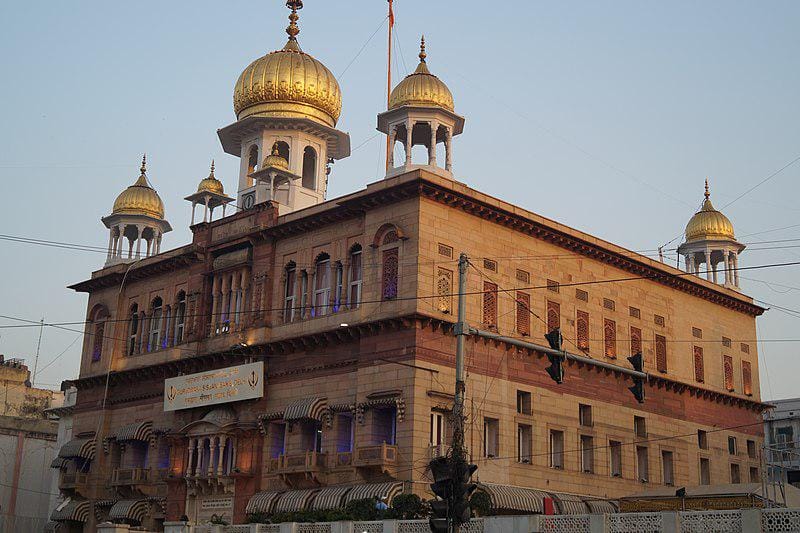
The prominent central structure called the Darbar Sahib (prayer hall), contains the Guru Granth Sahib, the holy scripture of Sikhism. The Gurdwara also houses a historical well, which is said to have provided water to Guru Tegh Bahadur during his imprisonment. Devotees gather at Gurdwara Sis Ganj Sahib to pay their respects, offer prayers, and participate in the langar (community kitchen), which serves free meals to visitors irrespective of their religion, caste, or creed—a hallmark of Sikh hospitality and egalitarianism.
Fatehpuri Masjid
Fatehpuri Masjid is a historic mosque built in 1650 by Fatehpuri Begum, one of the wives of Mughal Emperor Shah Jahan, and is thus named after her. The mosque stands as a prominent architectural and cultural landmark in the bustling Chandni Chowk area and embodies the grandeur of Mughal-era architecture.
Lal Quila
This historic monument served as the Mughal seat of power and in many ways, remains a symbol of power and of democracy, with the Prime Minister of India unfurling the tricolor in the Red Fort every year, on 15th August. Built by the Mughal Emperor Shah Jahan in the 17th century, it gets its name from the distinctive red sandstone used in its construction. This massive fortress is surrounded by high walls, reaching up to 33 meters in height, and stretches over a vast area, encompassing several significant structures and gardens within its complex.
Inside the Red Fort complex, visitors can explore a myriad of architectural marvels, including the Diwan-i-Aam (Hall of Public Audience) and the Diwan-i-Khas (Hall of Private Audience), where the emperor would meet with his subjects and dignitaries. The iconic Moti Masjid (Pearl Mosque) showcases stunning white marble craftsmanship, while the Hayat Bakhsh Bagh (Life-Bestowing Gardens) offers a serene retreat amidst lush greenery and flowing water channels.
Jama Masjid
The Jama Masjid needs no introduction. It is one of the largest and most renowned mosques in the country. Commissioned by the Mughal Emperor Shah Jahan and completed in 1656, it is an architectural marvel, characterized by its imposing main entrance, known as the "Buland Darwaza," or "Gate of Magnificence," which welcomes visitors into the vast courtyard, which can accommodate thousands of worshipers during prayers. The Jama Masjid serves as a focal point for the Muslim community in Delhi, many of whom gather here for daily prayers, Friday congregational prayers, and special religious ceremonies.
Food in Chandni Chowk and Chawri Bazaar
The food available in this part of Purani Dilli is arguably its biggest pull, with a variety of old and new establishments that are capable of taking your breath away with their delicacies, the taste of which can seldom be replicated outside the lanes of Chandni Chowk and Chawri Bazaar.
Bishan Swaroop Chaat Bhandar
Established in the 1920s by Lallu Ram, Bishan Swaroop Chaat Bhandar has a long-standing reputation for excellence in chaat-making. One of the highlights of Bishan Swaroop Chaat Bhandar is its eclectic variety of chaat dishes, each bursting with bold flavors and unique combinations of ingredients. Especially famous is its fruit chaat, for those who fancy the traditional way of having chaat, classic favorites like aloo tikki, dahi bhalla and papdi chaat are also abundantly available.
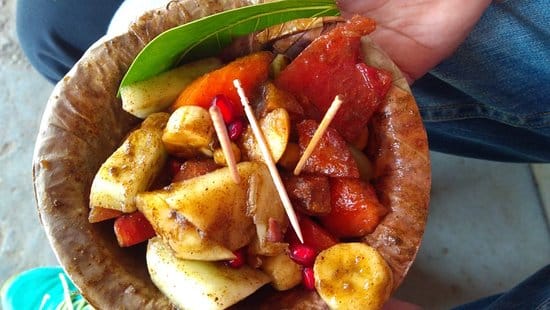
Kuremal Mohan Lal Kulfi
Kuremal Mohan Lal Kulfi Wale is a renowned establishment famous for its delectable and innovative varieties of kulfi, the Indian answer to ice-cream. What sets Kuremal Kulfi apart is its creative approach to kulfi-making. In addition to traditional flavors like malai (cream) and kesar (saffron), the shop is known for its unconventional and exotic kulfi varieties, such as stuffed kulfis. These kulfis are made by hollowing out fruits like mangoes, oranges, and custard apples, filling them with kulfi mixture, and freezing them to perfection. The result is a delightful combination of creamy kulfi and natural fruit flavors, making for a refreshing and indulgent treat, especially during the hot summer months.

Pandit Ved Prakash Lemon Wale
Established by Pandit Ved Prakash, the stall has earned a reputation for its delicious and rejuvenating bunta-style lemonade, which is made using fresh lemons, water, sugar, and a hint of salt and spices. Each glass of nimbu paani is expertly crafted to achieve the perfect balance of sweet, sour, and tangy flavors, making it a favorite during the summers among visitors to Chandni Chowk.
Qureshi Kebab Corner
This iconic eatery specializes in serving a variety of delectable kebabs, tikkas, and other grilled delicacies, prepared using traditional recipes and techniques passed down through generations. A brainchild of the Qureshi family, the kebab corner has garnered a loyal following for its mouthwatering offerings and authentic flavors. Arguably, their seekh kebabs are their best servings but even their juicy chicken and paneer tikkas marinated in flavorful marinades are to die for.
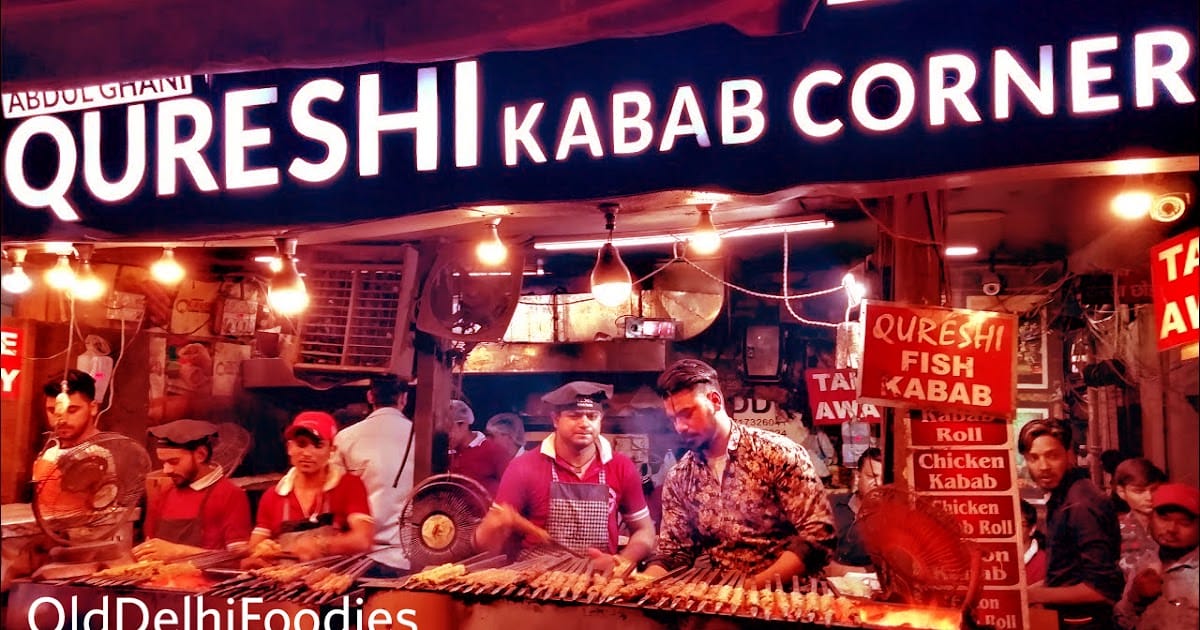
Karim's
Perhaps the most famous eatery in all of Purani Dilli and a permanent member of its culture, Karim's is celebrated for its extensive menu but its curries truly set it apart from everyone else. They offer a variety of rich and flavorful curries, prepared using aromatic spices and slow-cooking techniques. Dishes like mutton korma, chicken curry, and nihari (slow-cooked meat stew) are among the highlights of the menu and deserve to be paired with their sweet Sheermal bread. The ambiance at Karim's is rustic and unpretentious, with simple decor and communal seating, allowing guests to focus on the flavors and aromas of the food.

Cool Point Shahi Tukda
Right outside the narrow alley that nestles Karim's is Cool Point Shahi Tukda, the perfect way to round off a delicious Mughlai meal. Paired with a mango ice-cream that is prepared in-house, there are very few food items that take you as close to heaven as this does. Even their Phirni is worthy of a try.
Mohabbat ka Sharbat
"Mohabbat ka Sharbat" is a famous beverage found here. It is made using a blend of ingredients that typically includes pieces of watermelon, Roohafza and milk. The drink is often served chilled in tall glasses, sometimes garnished with fresh mint leaves for an extra touch of freshness. It is a unique combination of flavors, which creates a delightful balance of fruity and floral notes. It is typically sold by street vendors and small shops lining the bustling lanes of Old Delhi.
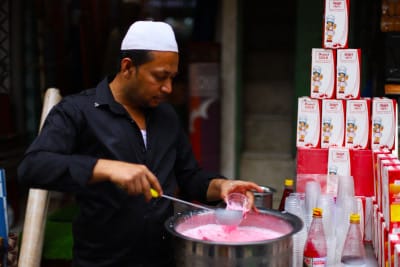
How to Get There
Chandni Chowk and Chawri Bazaar are littered with with narrow lanes and heavy traffic. It is thus recommended that one avoid private vehicles and ride-hailing apps such as Ola or Uber. However, they are well-connected by various modes of transport due to their central location.
The Delhi Metro is one of the most convenient ways to reach Chandni Chowk and Chawri Bazaar. The Chandni Chowk Metro Station and the Chawri Bazaar Metro Station are both located on the Yellow Line of the Delhi Metro. These stations provide easy access to the area, and both Chandni Chowk and Chawri Bazaar are within walking distance from the respective metro stations. For a more traditional and leisurely experience, visitors can opt for cycle-rickshaws to explore Chandni Chowk and Chawri Bazaar. Several Delhi Transport Corporation (DTC) buses also serve Chandni Chowk and Chawri Bazaar- 73, 100, 120, 120EXT, 142.



Comments ()